Last Updated on December 4, 2025
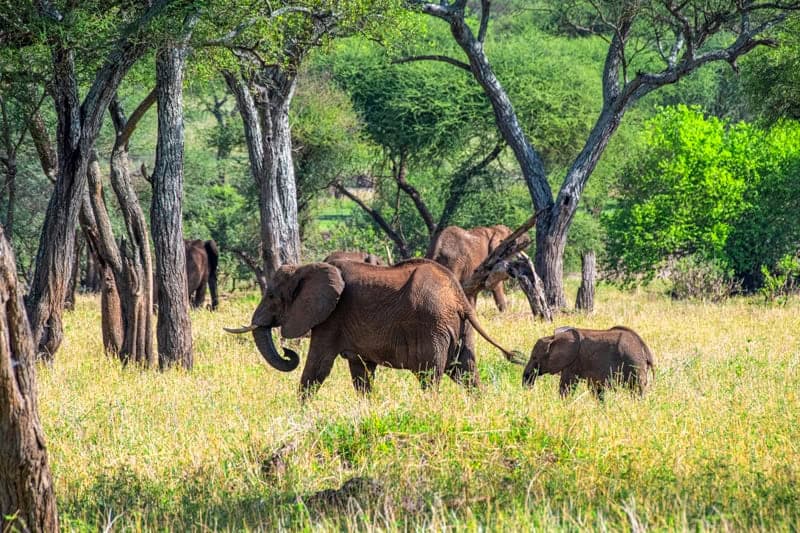
By Jim Ferri and Marjorie Kean
To View Video Only, Scroll to Bottom
Many travelers who haven’t yet taken one, sometimes wonder “what’s a safari really like?” I know that both I and my wife did before we decided to book ours. We viewed it as the adventure of a lifetime, especially since we’d be visiting the safari hot spots of Kenya and Tanzania.
For our trip, we joined Friendly Planet’s Best of Kenya-Tanzania Safari. It was a wonderful experience, and quite a bit different from other trips we’d taken. It let us see the fabled wildlife of Africa, plus experience the unique culture of two indigenous African tribes.
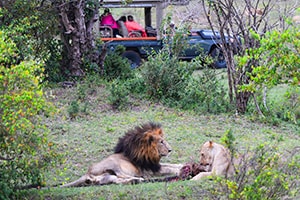
But, nevertheless, one might wonder whether it’s really worth trekking halfway around the world to see animals in the wild.
In a word, yes, since it’s exciting to see animals in an environment you’ll see nowhere else. But even more so, we found that the real thrill of a safari is just how you see the animals.
In most national parks in the U.S., Canada, and elsewhere in the world, you primarily stay on the road and view animals that come near you. But, conversely, on a safari the animals stay put and you drive into their natural habitat to find them. It’s all up very close and quite exhilarating.
But unlike the experience in some parks, you’re never allowed to leave your vehicle on a safari. Break the rule, and you could quickly become part of the local diet.
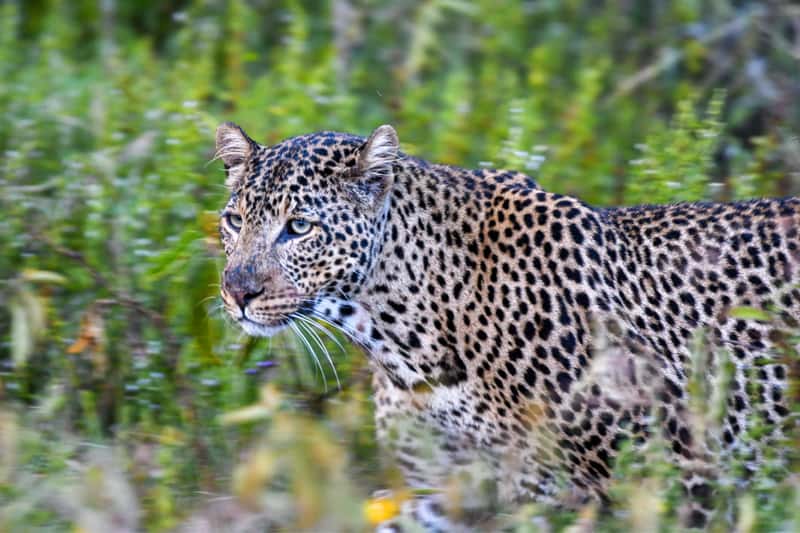
On Kenya – Tanzania Safaris in Search of the “Big Five”
On a safari you quickly discover that some species aren’t always easy to find since habitats change daily, especially for the “Big Five.” Those fabled five – the African elephant, lion, Cape buffalo, rhinoceros, and leopard – are all the legendary quests of big-game hunters.
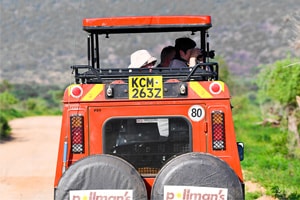
Except during the time spent driving between parks – which can, at times, be fairly long – you’re off-road all the time, mostly on twice-daily, three-to-four-hour “game drives.” Nevertheless, the drives during our entire Kenya and Tanzania safaris were always exciting, with us viewing entirely different experiences.
Our drives, as most are, were in pop-top safari vehicles, which provided excellent views for everyone. Since most animals don’t fear vehicles, the driver-guides can get incredibly close to them. That’s not to suggest, however, you ditch that telephoto lens since you always remain at a comfortable distance.
On the other hand, on several occasions during our safaris in Kenya and Tanzania, lions walked right up to the side of our Land Cruiser. Another time a young male elephant once got uncomfortably close, trumpeting his displeasure at where we had stopped. Our guide quickly shifted into reverse.
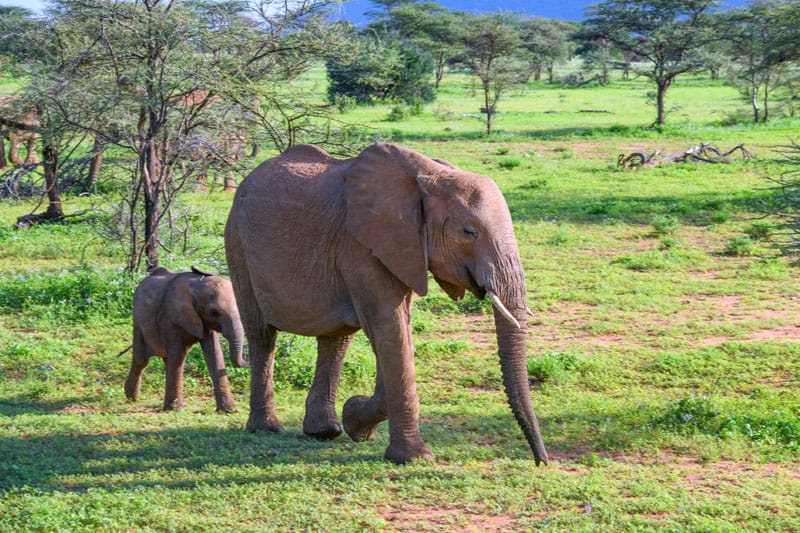
After a Delay, Off to Kenya
We began our trip in the U.S., flying from Miami to Frankfurt for a connecting flight to Nairobi. While at the airport in Frankfurt, however, Lufthansa canceled our Nairobi flight while we were already onboard the plane. We were told the cancellation was due to political unrest near the airport in Kenya.
Fortunately, we were later re-booked for an overnight flight to Kenya, and a Friendly Planet representative meet us at the airport in Nairobi. Although we were soon off to join our safari through Kenya and Tanzania, we had, unfortunately, lost a day. Worse yet, the airline lost Marjorie’s luggage, which finally caught up to us three days later.
We joined our small safari group at Sweetwaters Tented Camp in Kenya’s Ol Pejeta Conservancy. A 90,000-acre wildlife conservancy, Ol Pejeta is best known for its efforts to save the near-extinct northern white rhino.
We didn’t know what to expect at Sweetwaters and had found the word “tented” a bit misleading since the tents are not on the ground but on large platforms high off it. Each has a four-poster bed and private bath. It was comfortable, with good food, and, thankfully, the bar was up to par.
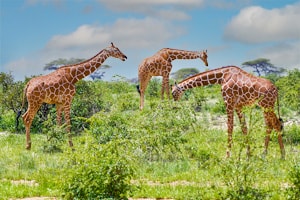
As in all the camps where we stayed in Kenya and Tanzania, the accommodations were excellent. Electronic fences encircle the hotel/camp areas, allowing animals to come within viewing distance but still ensure one’s safety. The first night in our tent we looked out and saw a rhino grazing just 150 yards (137m) away.
As hoped for, we found plenty of wildlife the following day, including gazelles, Cape Buffalo, giraffes, rhinoceros, and numerous colorful birds.
However, we didn’t expect to see a simple monument dedicated to several rhinos that poachers had killed. There we found small tombstone-like markers that stood like little sentinels in memory of the animals under a solitary tree on the equator.
VIDEO – Kenya and Tanzania Safaris:
Samburu Game Reserve
Before setting off for the Samburu Game Reserve the next day, we set out on another game drive. The drives were always unique and productive and that morning we found ourselves by a large herd of elephants. Watching the pack with their young move so quietly while feeding on the grassland and brush was fascinating.
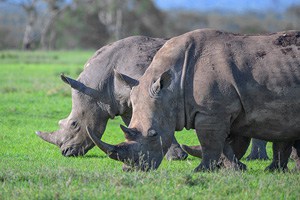
After three hours, we were off northward to the remote Samburu Game Reserve in Kenya’s Rift Valley for two days.
Samburu is a semi-desert savannah that was inaccessible for many years. Although small compared to other Kenyan parks, it attracts numerous wildlife. Its Uaso Nyiro River also has a large population of Nile crocodiles.
Animal sightings on game drives, which usually start slow, are a communal effort on Kenya and Tanzania safaris. But after about an hour, guide radios come alive as guides throughout the area share their discoveries. Soon, you’re racing off on a bouncing ride cross-country, camera at the ready. In Samburu, that was how we found an elusive leopard, which we followed for an hour or so.
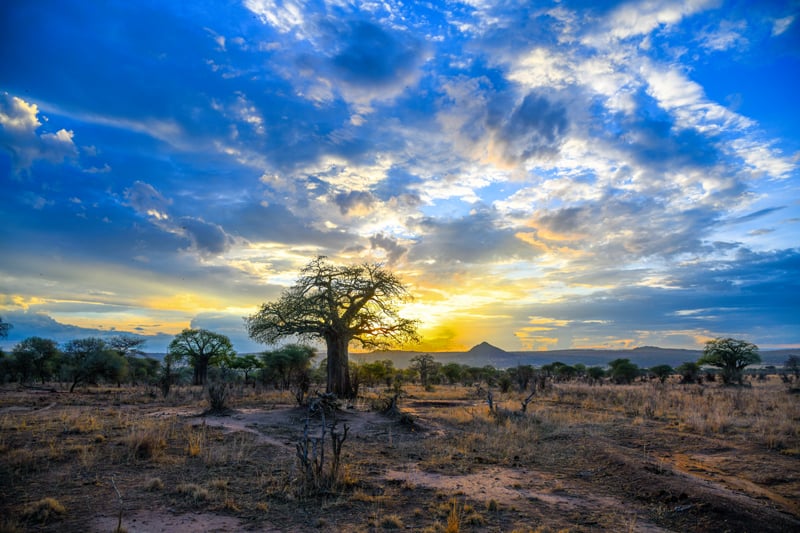
Visiting a Nomadic Tribe
Another good experience in Samburu was an afternoon visit to the Samburu Tribe, the region’s nomadic herders.
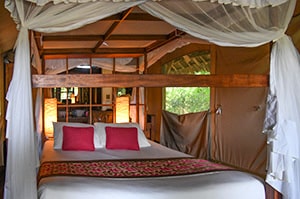
We enjoyed a fascinating hour discussing tribal culture and daily life with Samburu tribesmen, even visiting their hut homes. Thankfully, we never encountered language difficulties in Kenya since English is one of the two official languages, the other being Swahili.
Our lodgings here were at the Samburu Intrepids Lodge, another upscale “camp.” We found all our accommodations to be upscale on both the Kenya and Tanzania safaris.
As for the quality of the tour company, several members of our group who had been on other Friendly Planet tours said they continued to book FP tours because of the value it offered, the experience of its guides, and the quality of the hotels. We found everything to be top quality.
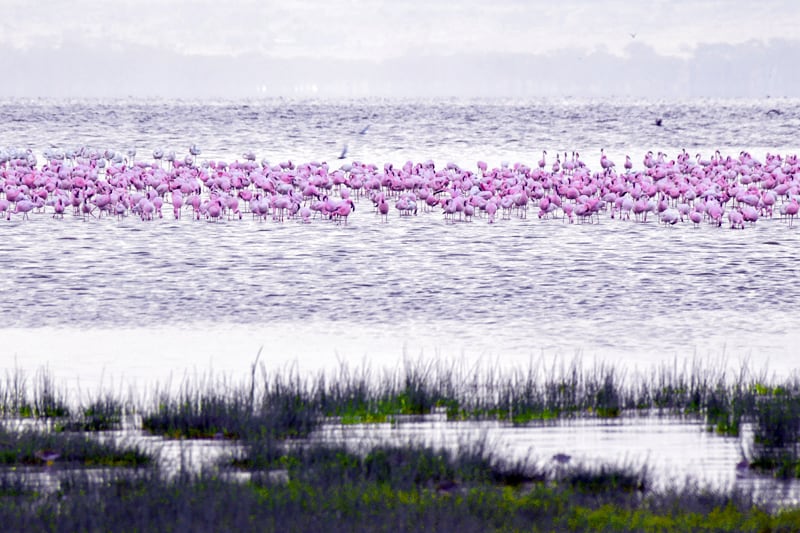
Lake Nakuru National Park
Six days into our Kenya and Tanzania Safaris, we headed to Lake Nakuru National Park, considered one of Kenya’s finest. It’s on the floor of the Great Rift Valley, the colossal trench that stretches 3,700 miles from Lebanon to Mozambique.
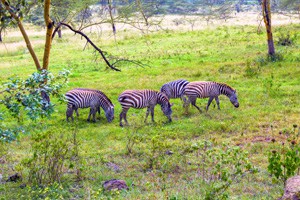
En route to the park, we passed tea plantations covering the hillsides, before stopping at an overlook for a view of the southern end of the Rift Valley. The Rift was an impressive site, and the stop was also welcomed as a break on the long ride.
We dropped our bags at the Sarovia Lion Hill Game Lodge on arrival. With clusters of individual rooms on a shaded hillside, it provided a different atmosphere than our previous accommodations.
The park is another rhino sanctuary and also home to the endangered Rothschild’s giraffes and other wildlife. It also provided our first glimpse of pink flamingos. But, unfortunately, since rising water levels made roads near the lake impassable, we could only view them from afar.
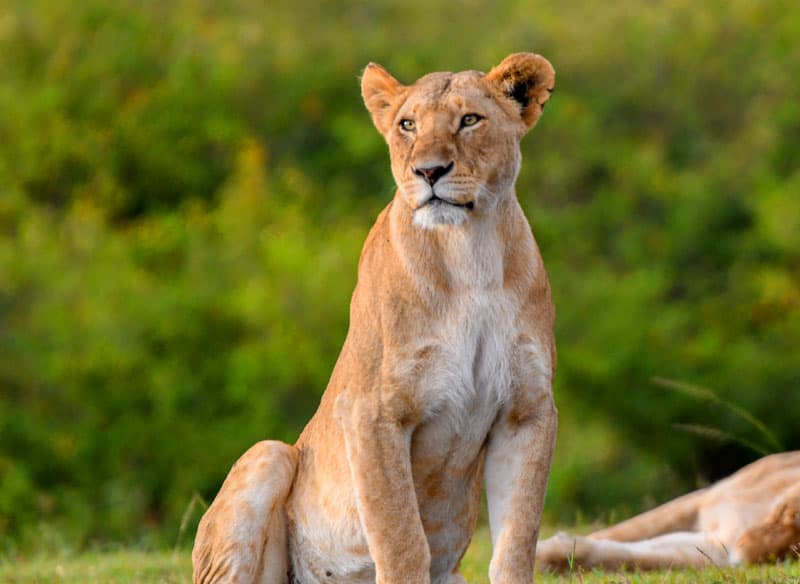
Maasai Mara National Reserve, Kenya
Kenya’s Maasai Mara National Reserve, Kenya’s most famous reserve, is famous for the annual migration of millions of wildebeests and zebras from Tanzania’s Serengeti National Park. As a result, Maasai Mara Serengeti is ground zero for sightings on both Kenya and Tanzania safaris.
Maasai Mara is an incredible place at any time of year. Its grassy plain and lush outcrops are home to an astonishing number and variety of wildlife. They include lions, cheetahs, zebras, hippos, buffalo, elephants, wildebeest, etc. It also has a fantastic range of bird life, including ostriches, cranes, and storks — everything you’d want to see on a safaris in Kenya and Tanzania.

It’s hard not to fall in love with Maasai Mara since there is animal activity virtually everywhere you turn – lions with their kill, cheetahs lolling beneath acacia, hippos wallowing in their pools. The numerous animals are so overwhelming that you can become nonchalant at the news of sightings. But none of us could be blasé at the sight of those half-dozen ostriches herding 40 or so young.
As in Samburu, we also visited a local Maasai village in Maasai Mara. Again, it was fascinating as the warriors discussed their lives and polygamous customs with us.
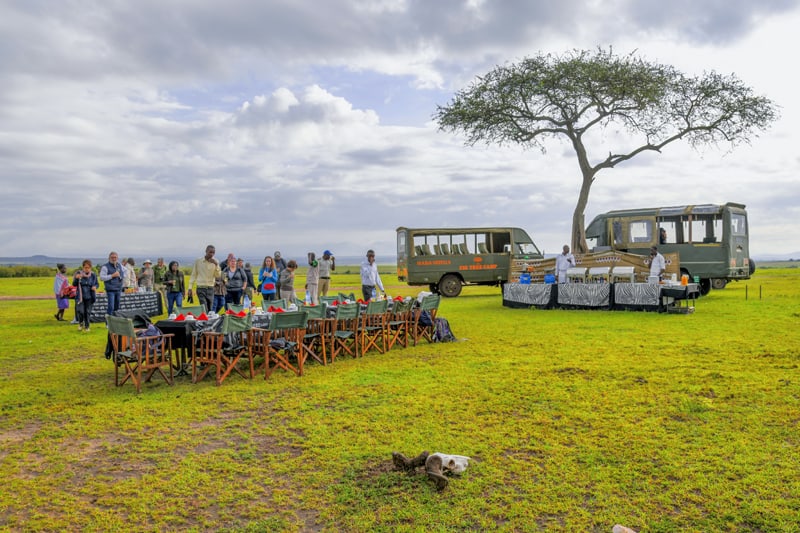
Our “Out of Africa” Safari Experience
It was in Maasai Mara where we enjoyed one of the best experiences on our Kenya and Tanzania safaris. It was an early morning hot-air balloon ride, and 16 of us watched the sunrise while taking pictures and viewing wildlife. In addition, we enjoyed the most amazing views of the African plain.
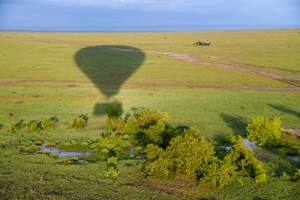
Following our hour-long balloon flight that morning, we found an equally incredible safari experience on the ground.
There we each became immersed in our own “Out of Africa” experience as we sat on a vast green plain where great herds of animals grazed in the distance. A long tablecloth-covered table before us held glasses of Champagne, mimosas, and Bloody Marys. There were plates full of fresh fruit, omelets, pancakes, French toast, freshly great baked croissants, bacon, sausage, etc.
Nowhere else could we feel we were more part of the old British Empire. Admittedly, an additional $450 per person was expensive but it was well worth the experience and was a highlight of our trip.
You may also enjoy: A Tanzania Safari – An Incredible Wildlife Experience / Things To Do In Kenya (After Your Safari) / South Africa: The Other Side of the (Table) Mountain
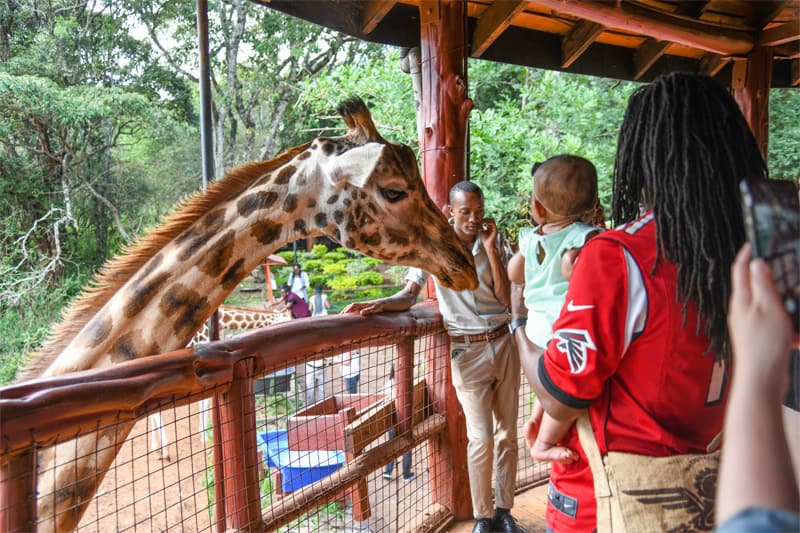
A Wonderful Experience on Our Kenya and Tanzania Safaris
Two-thirds of the way through our safari, we returned to Nairobi. The following morning our trip would turn southward to Tanzania to explore the abundant wildlife in its national parks.
First, however, three events still awaited us in Nairobi.
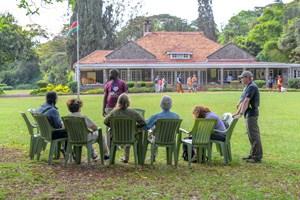
The first was the Karen Blixen Museum, the former home of the author of “Out of Africa.” Whether you are a fan of the film or not, you’ll likely find the museum fascinating. The house and grounds are lovely, and the background given by the guides is both interesting and intriguing.
The second was the “world-famous” Carnivore Restaurant, an all-you-can-eat dining experience. As a carnivore, I was looking forward to the occasion, expecting to sample game meat. It doesn’t serve game, however, only beef, chicken, pork, and turkey, most of which I’ve found much better elsewhere. Don’t waste your time here.
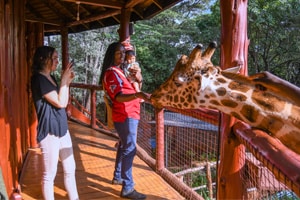
But it was the third, the Langata Giraffe Center, which was over-the-top. The Giraffe Center protects the famous Rothschild’s Giraffe, which is near extinction in western Kenya. The center is operated by the African Fund for Endangered Wildlife (AFEW).
In 1979, only 120 of the species survived. Today, thanks to the center’s breeding program, the population is over 1,000, with many released into parks, including Lake Nakuru National Park. It is, as Lonely Planet says, “one of Kenya’s good-news conservation stories.”
Making the news better is that you can hand-feed the giraffes from a raised wooden structure at the center. You can even hug one. And kiss one…which I can assure you is a unique experience.

What an amazing trip! Love the pic of all the pink flamingos! Our safari is South Africa was definetly a highlight of our likes.
Thank you Rebecca. Wish we could have gotten closer to the flamingos but it was impossible.
Wow. It’s very interesting. The giraffe looks so cute.
Giraffes are always cute.
I appreciate your narrative of the whole experience. As a resident of Nakuru ,having been to all the sites you have mentioned, I approve it.
Thank you Daniel. a movie about the safari is in today’s newsletter. If you’re not a subscriber go to the NST site and type “safari video” in the search box to see it.
Hi Jim,
What a wonderful trip you have had! Can I ask how many days did you spend in Kenya and Tanzania?
Hi Shisha, The total time spent on this safari was 14 days, about 6 days actually on the ground on safari in each country, with the remaining days spent traveling. It was a very good trip.
Jim